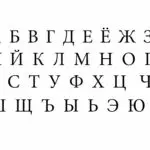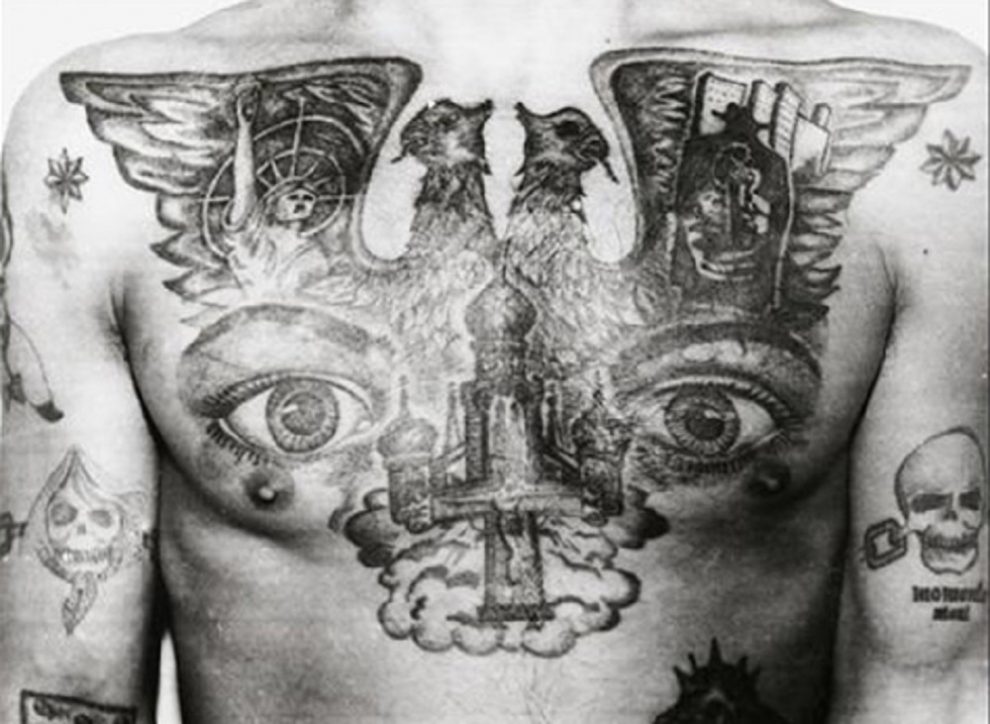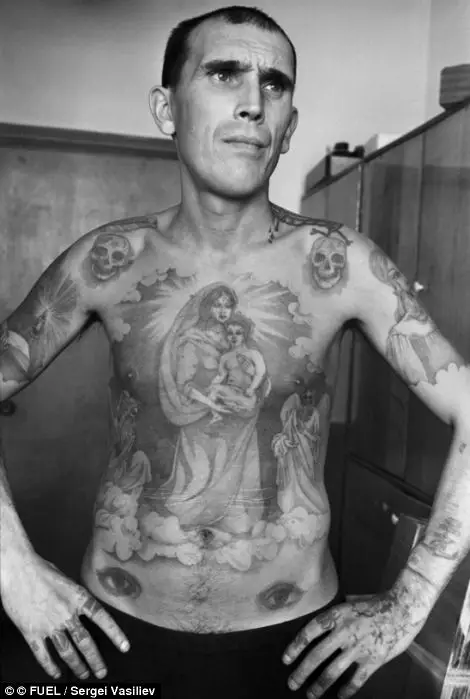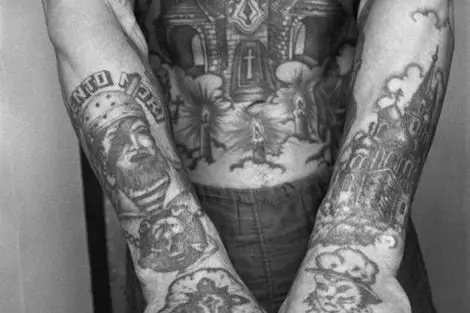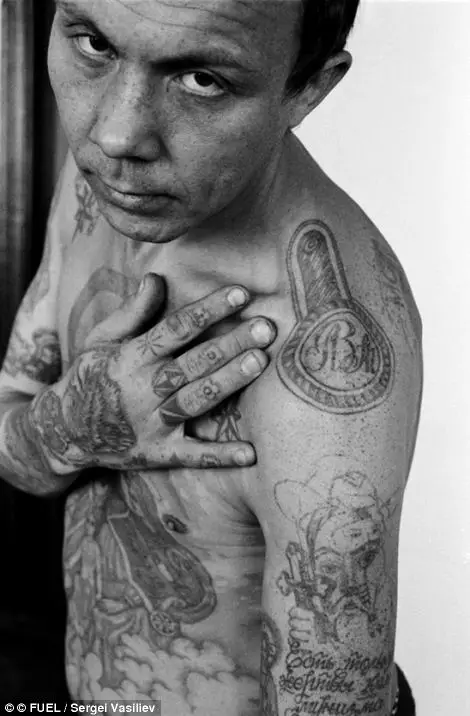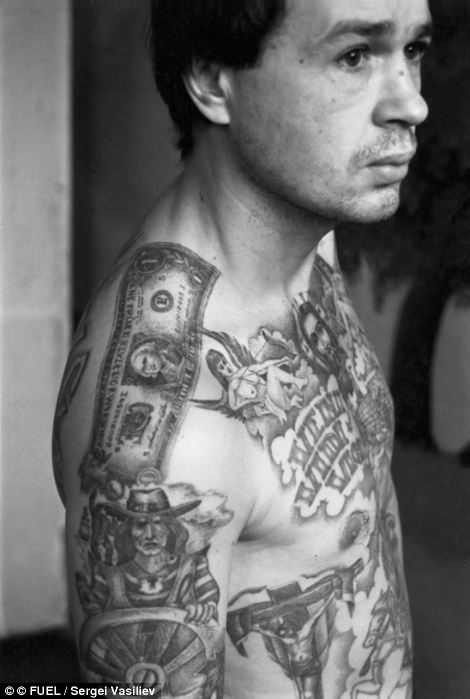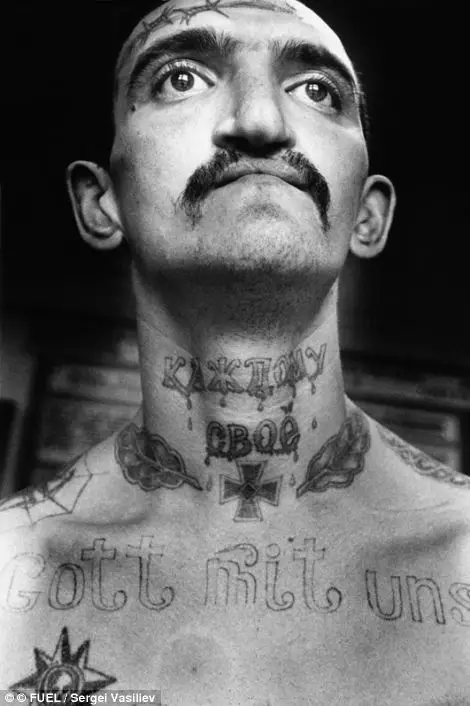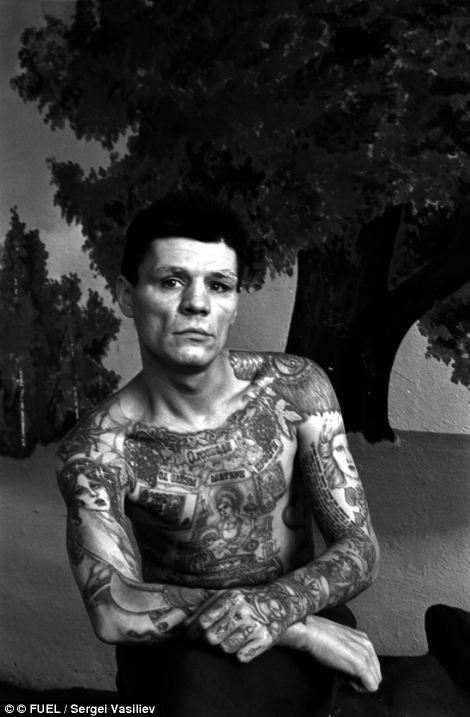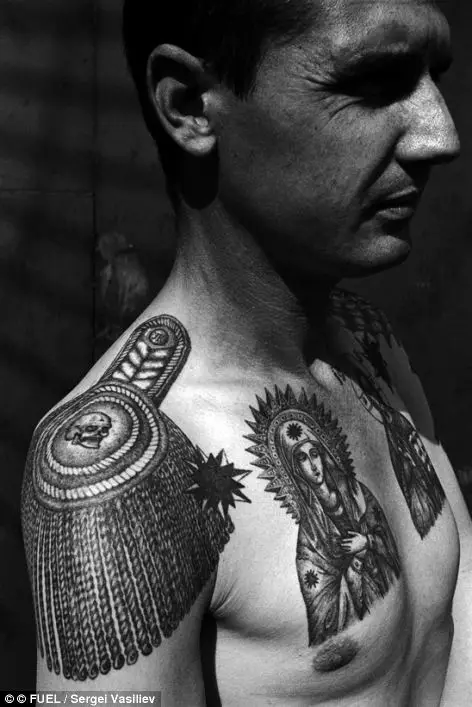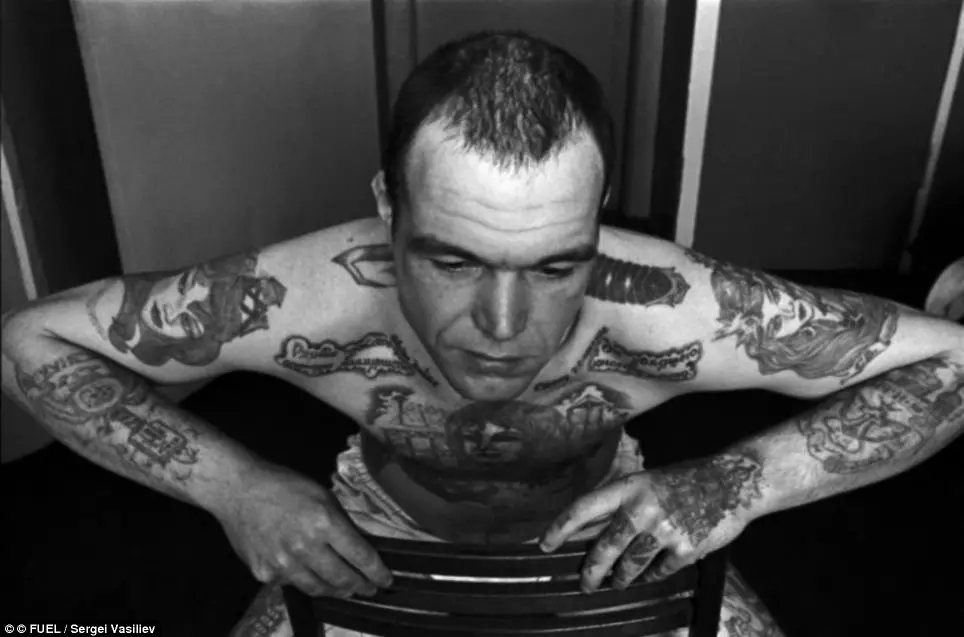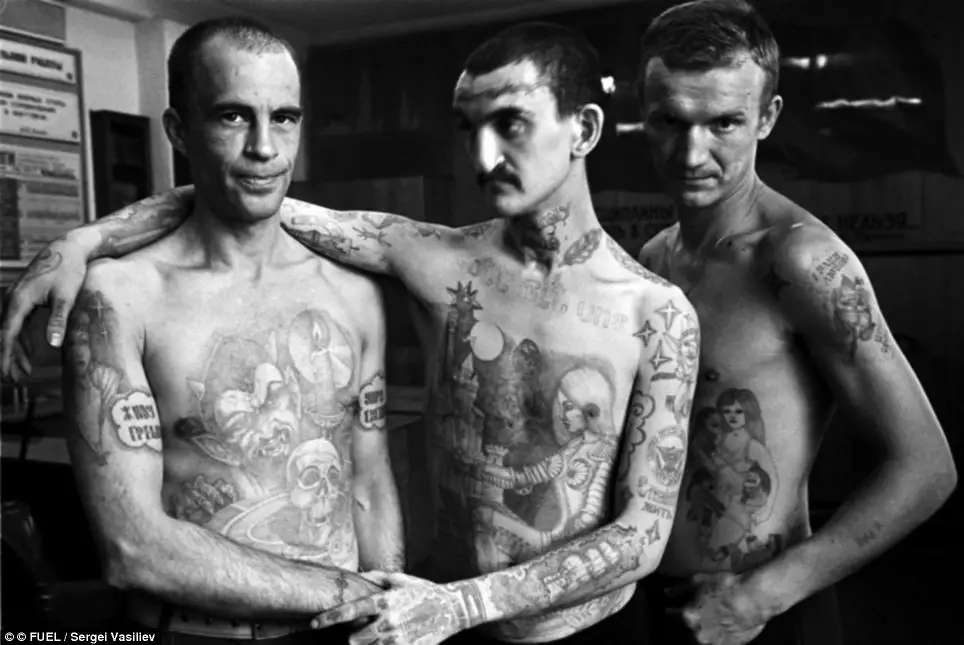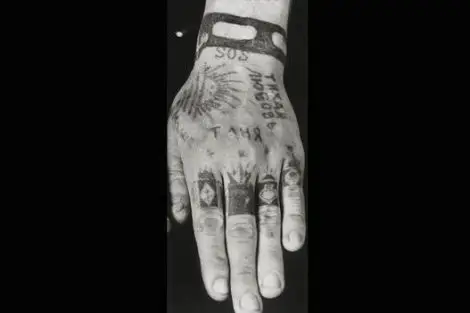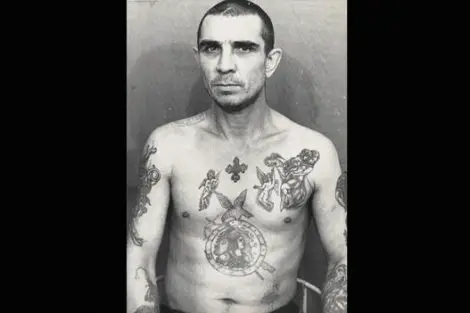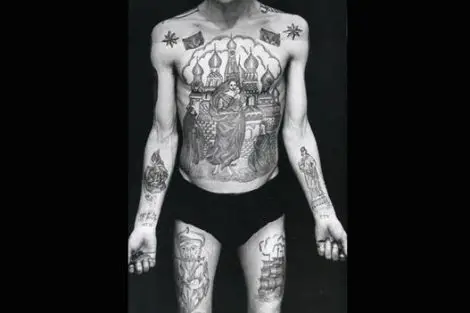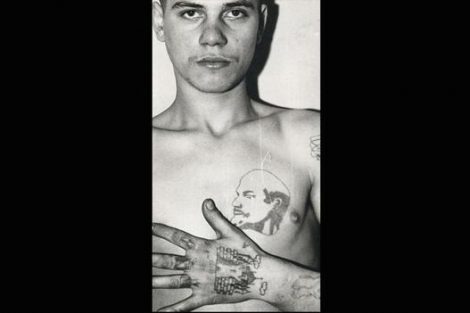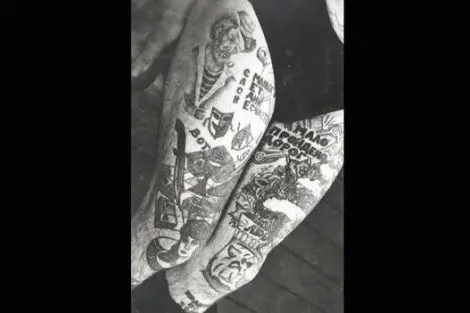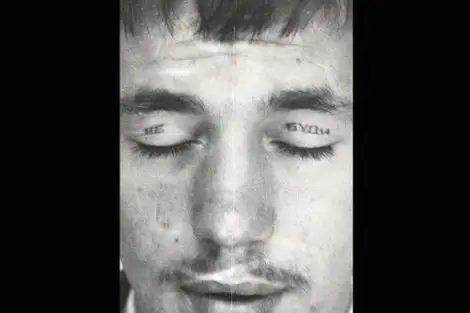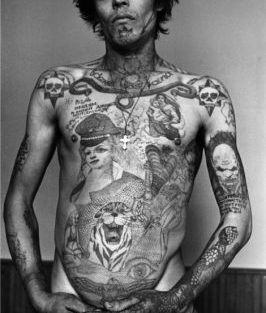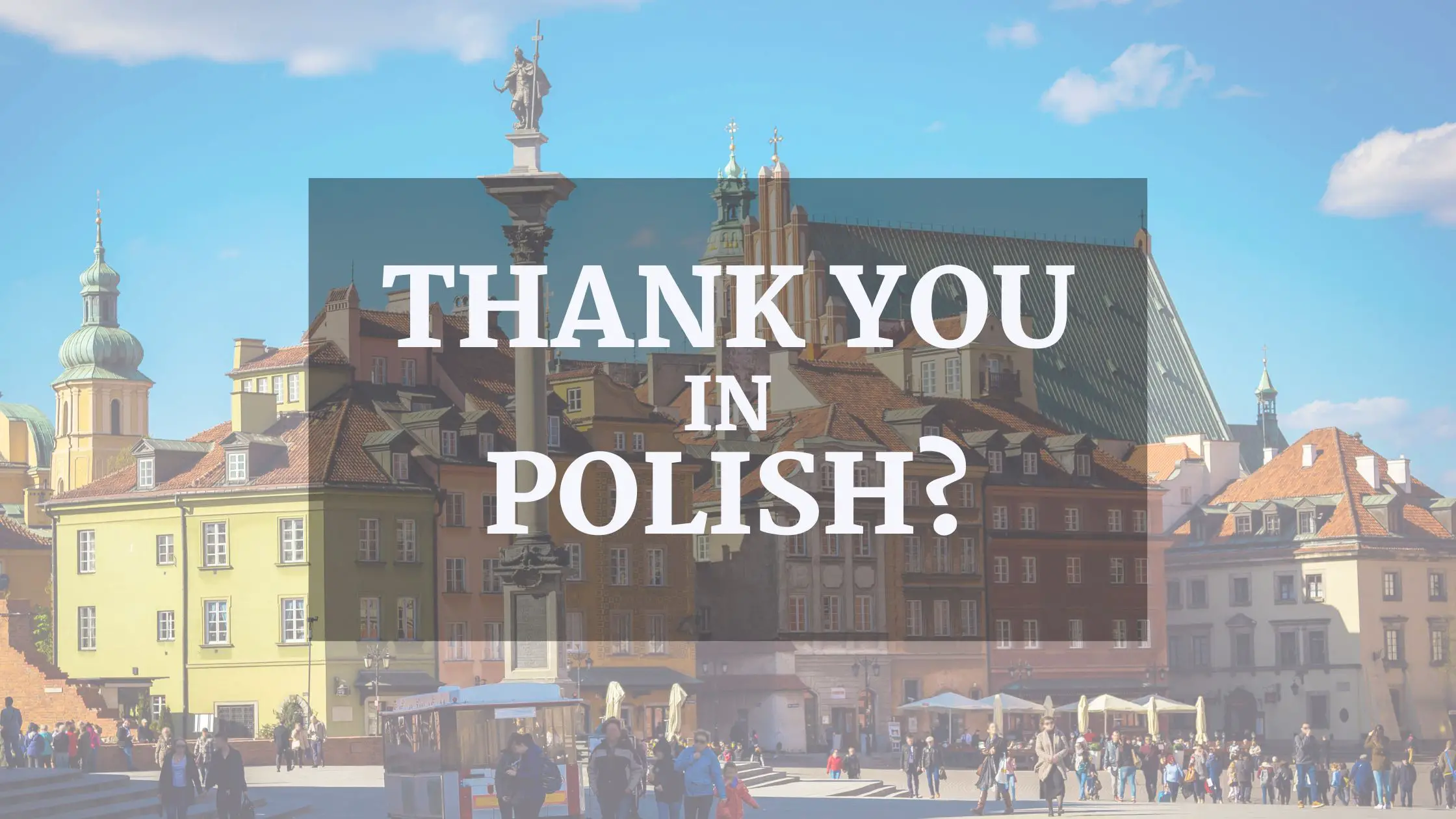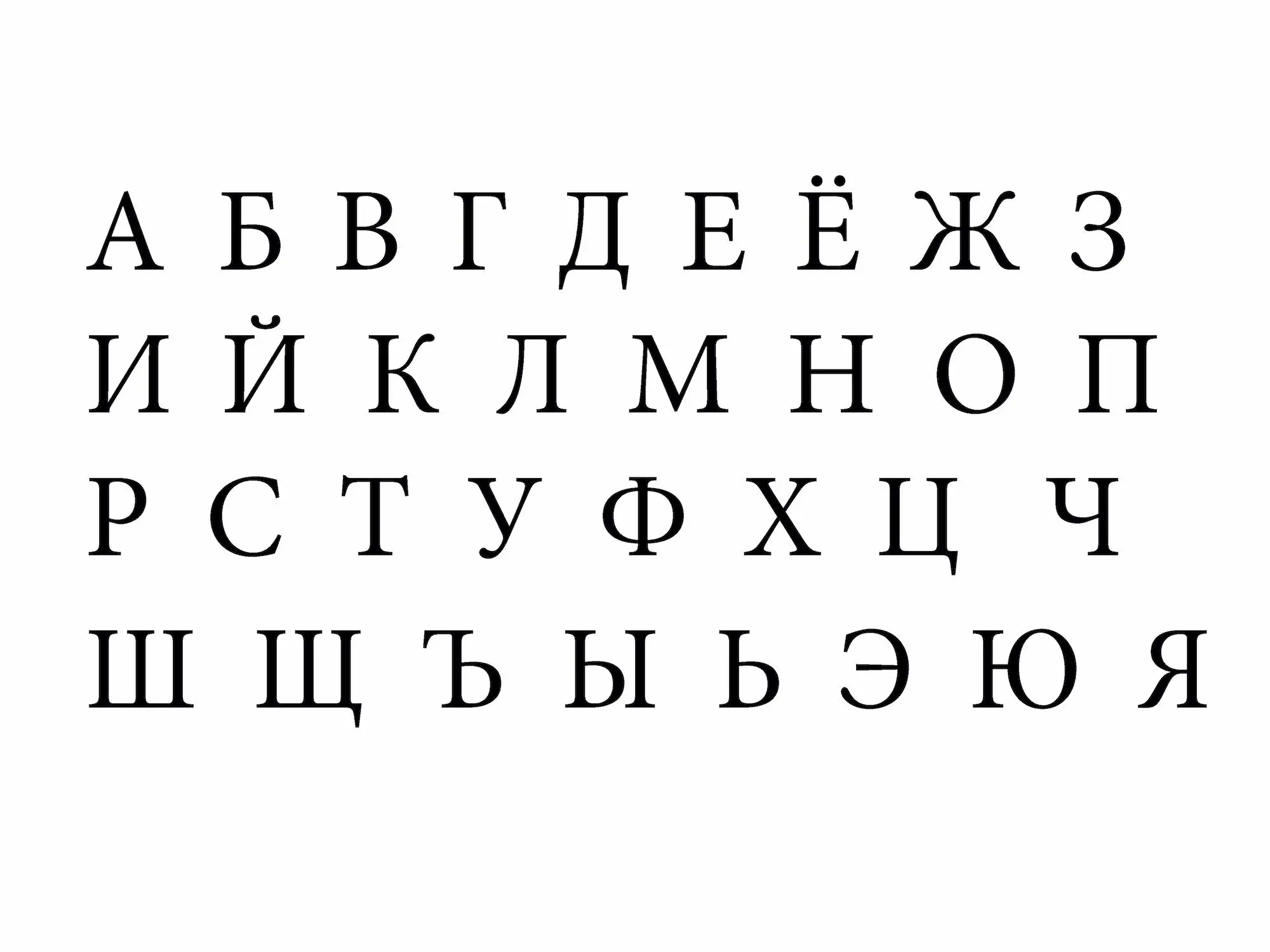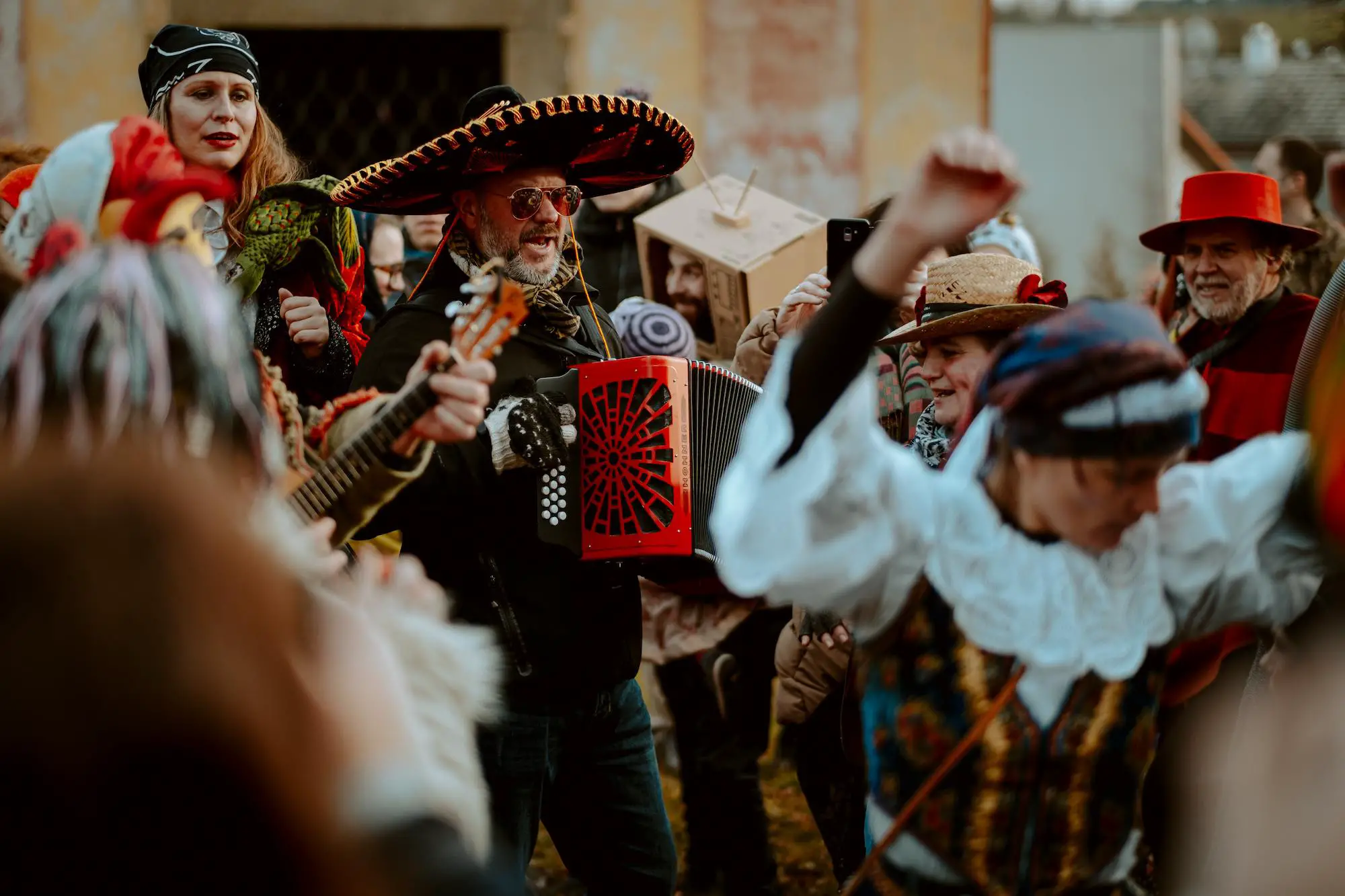After the fall of the Soviet Union, the life of the vory v zakone (or thieves in law, members of Russian organized crime) has become a subject of great interest. From life in prison to the stories of individuals, this almost secretive organization has been receiving attention from westerners to the Russian people themselves, as evidenced in movies such as Eastern Promises and Bumer. But perhaps no detail is no more interesting than the tattoos the vory wear.
Since the original prisoners in the gulag began Russian organized crime, it’s members have become known for the plethora of tattoos that cover their body. These tattoos tell one of the wearer’s life, his views, his desires, and his rank in the mafia hierarchy.
The Russian criminal underworld has several common tattoos which all display some aspect of the wearer’s life as a criminal. Most commonly, a church similar to that of St. Basil’s Cathedral may be found on the chest or back of a vor, the number of steeples on the church either signify the amount of times he has been incarcerated or the number years he has spent in jail.
Stars on the top chest or knees represent rank and honor in a criminal and means he follows the thief’s code, usually these would be gained by reaching a certain position in mafia. Also, barbed wire across the forehead means that the wearer has been given a life sentence without possibility of parole.
One of the most famous people who brought the meanings of these tattoos to light was Danzig Baldayev who has been reproducing tattoos from prisoners during his life as a guard in Kresty Jail and his later job as a detective with the Leningrad police force. Compiling about 3,600 designs from different parts of the country, he has recently made many of these public in a three-volume publication with explanations of their meanings.
To see the designs and explanations of Danzig Baldayev and more photographs of Russian mafia tattoos, visit Fuel-Designs.






